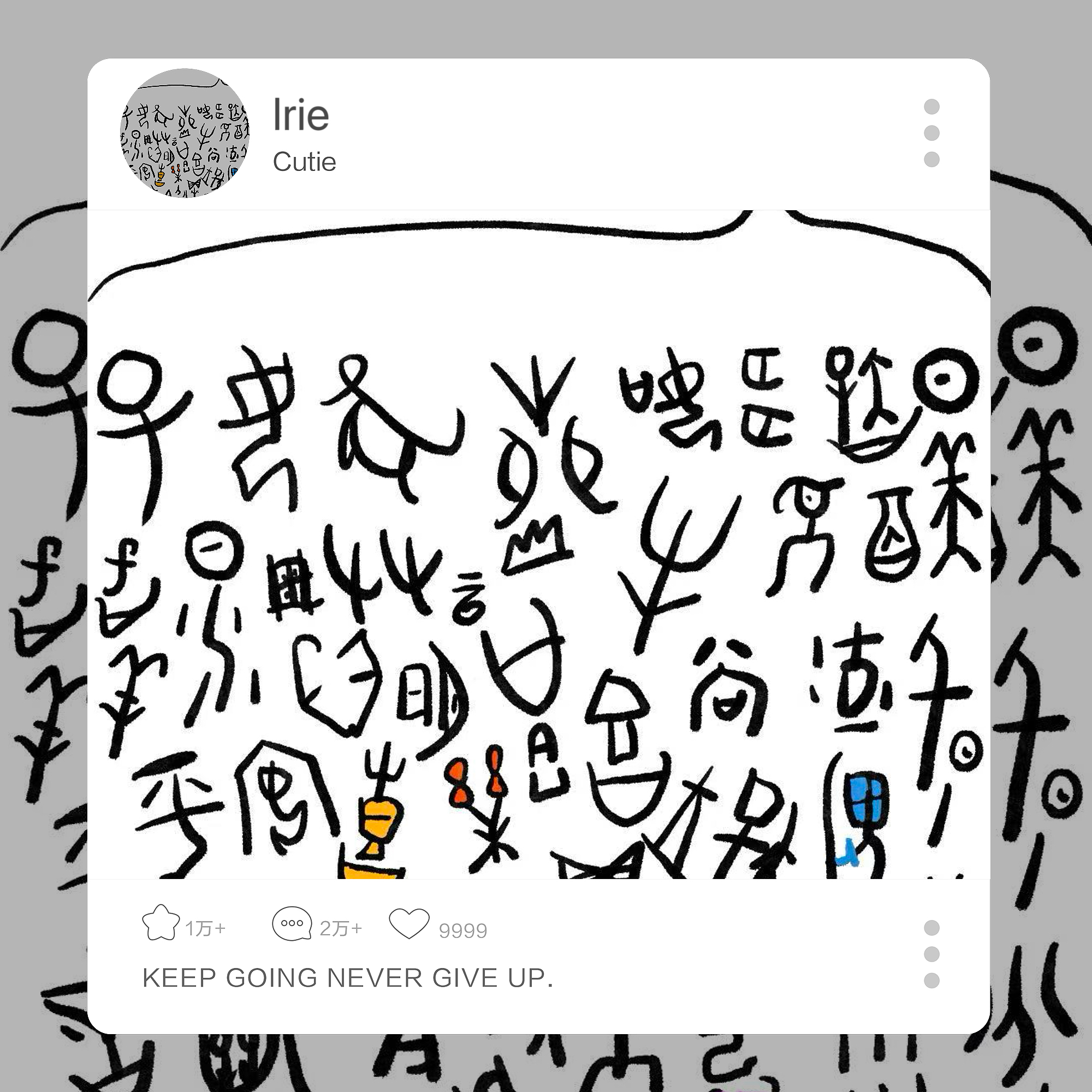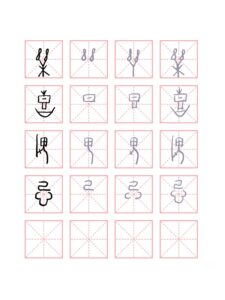Languages, Feelings, and Signs

Summary
This open toolkit explores how emotions can be simplified into visual symbols by drawing inspiration from the structural principles of Oracle Bone Script—such as body-based representation, action-based depiction, and force-direction dynamics—to help learners understand how complex feelings can be efficiently encoded through form.
This open toolkit guides learners to express emotions through simple signs by observing and transforming the structural logic of Oracle Bone Script.
1. Cultural Context
Oracle Bone Script represents one of the earliest human attempts to record inner states and external experiences through simple visual structures. Its use of body parts, actions, and situational scenes to express abstract meanings reflects how ancient people bridged concrete reality and emotional perception, offering modern learners a lens to understand how cultures transform lived experiences and emotions into symbolic language.
2. Learning Objectives
- Successfully creating an effective emotional symbol that integrates the structural logic of oracle bone script
- Learn the writing structure of the Oracle Bone Script.
- Understand how Oracle Bone Script uses structure, actions, and scenes to transform emotions into visual forms.
Why must the oracle bone script be the starting point? Why must we use the structure of oracle bone script to create emotive symbols?
Innovative emotive symbols need not be confined to contemporary emojis alone.
Oracle Bone Script offers us fresh perspectives on emotive symbolisation. Beyond mere facial expressions, we can also extract symbols from actions, scenes, and everyday life to convey our emotions.
3. Workshop Structure
Duration: 20 minutes
Step 1 (0–2 min): Guess
What emotions do these patterns represent respectively?

Image 1
Answer: happy, like, fear, jealous.
Step 2 (2–5 min): Tracing and Observation
Learners who use electronic devices for creation:
Import or copy the copybook into your drawing tool.
Learners who use papers and colour pens for creation:
Print the copybook.

Image 2
During this process, you need to think about this:
How did humans express emotions in the past?
From a structural perspective, did they use straight lines, arcs, or geometric shapes?
From a formal perspective, can the patternization of emotions be conveyed through actions and scenarios?
Step 3 (5–8 min): Read the interpretation of the Oracle Bone Script structure.
We can observe that the character “like” and “jealous” in oracle script is depicted through actions or body parts.
Jealousy: It starts from the body. When people are jealous of others, the heart below will deform and twist, thereby expressing jealousy.
Like: On the top is an abstract drum, and below is a smiling mouth, showing a series of actions of beating the drum and smiling.
“Fear” and “happy” are expressed through specific scenes.
Happy: A string is tied to a wooden object, and they believe that music can bring happiness.
Fear: A terrifying person is holding a knife. At that time, people were afraid of this scene, so it was used to express fear.
Like, Happy = Outward, Open, Ascending, Diffusion: Expresses “the outward expression of pleasant emotions”
Fear, Jealous = Inward, Contraction, Alertness, Obstruction: Expresses “the inward contraction and defense of negative emotions”
Emotion = A mechanical structure (expansion or contraction)
All four words convey the nature of emotion through “the direction of force”, rather than through drawing faces or expressions.
Step 4 (8–15min): Symbolize Emotions
Please express your emotions using the structure and expression form of the Oracle Bone Script.
Small tips: structure ––– point, arc line, line, circle, closed pattern
expression form ––– specific scenes? (using “ghost” to express fear?) actions? (using “jump” to express happiness?)
You need to choose one emotion.
You can use colour pens, white paper, or your electronic drawing tools to make the drawing.

Image 3 Example of symbolizing emotions
Step 5 (15–16 min): Present your creative ideas in simple terms.
Step 6 (16–20 min): Sharing and Reflection
Objective: To understand the polysemy of symbols and their expressive effects
Randomly select 3 to 4 people to show the symbols, and ask the others to guess what emotions they represent.
Let the creator reveal the answer.
Reflective Questions
Which symbols are the easiest to understand?
Do you think your emotions were accurately expressed?
What would be different if another shape were used?
Evaluation Methods
| Dimension | Content | Scoring Criteria (1-5 points) |
| Creativity | Does it have a unique concept? | 1 = Mimicking emojis
5 = Original and vivid |
| Symbol Logic | Can the structure and meaning be discerned? | 1 = No connection
5 = Clear logic |
| Emotional Expression | Can others guess the emotions? | 1 = No one guessed correctly
5 = 2-3 guessed correctly |
| Self-Reflection | Can the emotional mechanism behind the symbol be clearly explained? | 1 = No explanation
5 = Deep expression |
Excellent – 20 points
Evaluation: Strong symbol creativity, precise expression, clear explanation, easily understandable by others.
Good – 16 points
Evaluation: Original, clear expression of emotions, coherent logic, easy to understand.
Satisfactory – 12 points
Evaluation: Can complete the task, symbols have certain associations with emotions, explanation is basically clear.
Basic – 8 points
Evaluation: Symbolic expression is vague, emotions are difficult to recognize, explanation is relatively simple.
Needs Improvement – 4 points
Evaluation: Incoherent expression of emotions, lack of logic, and symbols are difficult to understand.
Languages, Feelings, and Signs © 2025 by Airui Lei is licensed under CC BY-SA 4.0


